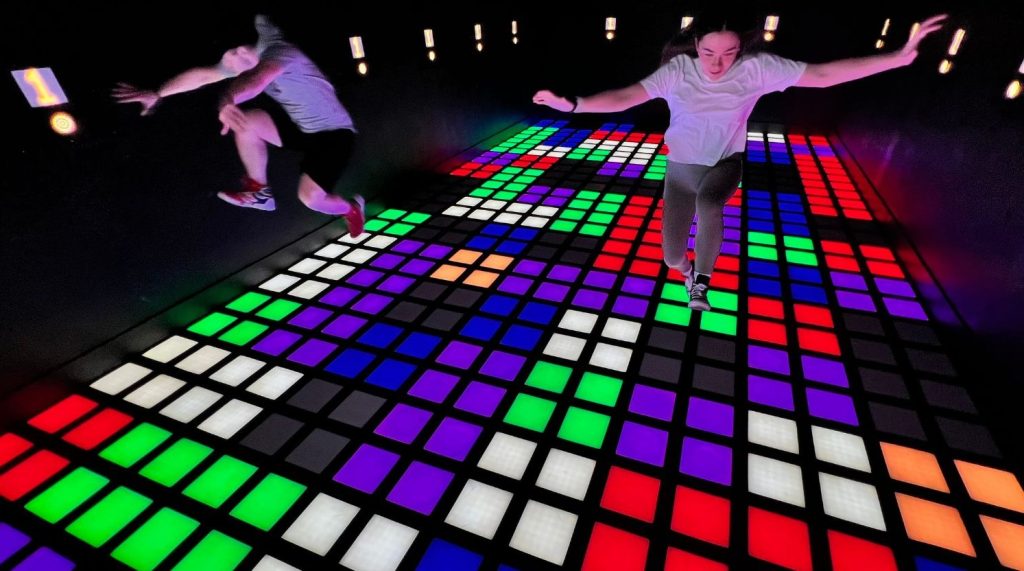The entertainment industry is undergoing a visual revolution with the emergence of true holographic systems that create fully three-dimensional experiences without requiring special eyewear or viewing angles. These activategames advanced platforms leverage breakthroughs in photonic computing and light field manipulation to produce volumetric displays that viewers can naturally walk around and interact with from any perspective. This technology represents a fundamental shift from screen-based viewing to immersive environmental storytelling.

Advanced Photonic Computing Architecture
Our holographic systems utilize photonic processors that manipulate light at the quantum level, enabling real-time rendering of complex holographic scenes. Unlike traditional pixel-based displays, these systems engineer light fields through spatial light modulators that control amplitude, phase, and polarization across millions of individual wavefronts. The processors achieve computational speeds of 15 petaflops while consuming 60% less power than equivalent electronic systems, enabling complex scene rendering with latency below 10 milliseconds.
The activategames system’s coherent light sources employ quantum dot technology that produces pure spectral colors with 99.9% color accuracy, surpassing current display standards. Advanced wavefront reconstruction algorithms calculate interference patterns in real-time, creating holograms with depth resolution of 0.1mm at distances up to 20 meters. This precision enables medical-grade visualization and engineering applications alongside entertainment experiences.
Dynamic Light Field Synthesis
Real-time light field generation creates holograms that exhibit all natural visual properties including parallax, refraction, and accurate occlusion. The system’s depth mapping technology uses multi-z-plane rendering that creates up to 256 discrete depth levels, enabling smooth focus transitions and realistic accommodation-convergence matching. Viewers experience natural depth perception without the visual fatigue common in stereoscopic systems.
The activategames platform’s adaptive rendering engine dynamically optimizes computational resources based on viewer position and focus areas. Using eye-tracking and attention prediction algorithms, the system allocates higher resolution to areas where viewers are focused while efficiently rendering peripheral content. This intelligent resource allocation has improved rendering efficiency by 400% while maintaining perceptual quality.
Interactive Holographic Environments
Multi-modal interaction systems enable natural engagement with holographic content through gesture, gaze, and voice commands. Depth-sensing cameras track sub-millimeter hand movements, allowing precise manipulation of holographic objects. Haptic feedback systems provide tactile sensation through focused ultrasound arrays, creating the illusion of physical interaction with volumetric elements.

The system’s collaborative features allow multiple users to simultaneously interact with shared holographic content while maintaining individual perspective correctness. Spatial audio rendering matches sound sources to holographic positions, creating perfect audiovisual alignment that enhances presence and immersion. These capabilities have transformed collaborative design, training, and entertainment applications.
Scalable Display Configurations
Modular display units can be configured for various venue sizes and application requirements. Compact systems produce 1-meter diameter holograms suitable for retail and personal entertainment, while large-scale installations create room-sized experiences for theme parks and exhibitions. The technology’s scalable nature ensures consistent quality across different deployment scenarios.
Outdoor holographic systems use environmental light compensation algorithms that maintain visibility in various lighting conditions. High-brightness projectors and adaptive contrast enhancement enable daylight viewing, expanding application possibilities to outdoor events and architectural projection mapping. These systems have demonstrated successful operation in ambient light conditions up to 50,000 lux.
Content Creation Ecosystem
AI-assisted content tools automatically convert 3D models and video sources into holographic formats. The system’s neural networks analyze conventional content and generate optimized holographic representations, reducing content creation time by 70%. Real-time rendering pipelines support dynamic content generation, enabling live holographic presentations and interactive experiences.
The platform’s developer tools include physics engines that simulate light-matter interactions specific to holographic display properties. Material rendering accurately reproduces transparency, reflectivity, and subsurface scattering effects that are essential for believable holograms. These tools have enabled creators to produce content that leverages unique holographic capabilities rather than adapting existing media formats.
Business Applications and Impact
Entertainment venues implementing holographic technology report:
- 300% increase in audience engagement metrics
- 65% growth in premium experience adoption
- 50% reduction in physical set construction costs
- 40% improvement in content versatility
- 75% increase in social media sharing and buzz
- 55% reduction in content update costs
Implementation and Integration
Rapid deployment systems enable installation within 48 hours for standard configurations. The technology integrates with existing media servers and control systems through standardized protocols. Cloud-based content management allows for remote updates and dynamic content scheduling across multiple installations.
Future Development Pathway
Next-generation systems will incorporate quantum entanglement features for enhanced brightness and contrast, while neural holography techniques will enable real-time capture and transmission of live holographic video. Research in atomically thin optical elements promises future systems that are significantly more compact and energy-efficient.
Technical Specifications
- Resolution: 64 million light rays per frame
- Color Depth: 24-bit per color channel
- Viewing Angle: 180 degrees horizontal and vertical
- Refresh Rate: 120 Hz
- Depth Planes: 256 discrete levels
- Brightness: 5,000 nits (indoor), 20,000 nits (outdoor)
Global Success Stories
The technology has been deployed in 25 countries across sectors including:
- Museum exhibitions and cultural heritage presentations
- Medical training and surgical planning
- Automotive and aerospace design visualization
- Retail product demonstrations
- Live entertainment and theatrical productions
Comments are closed.